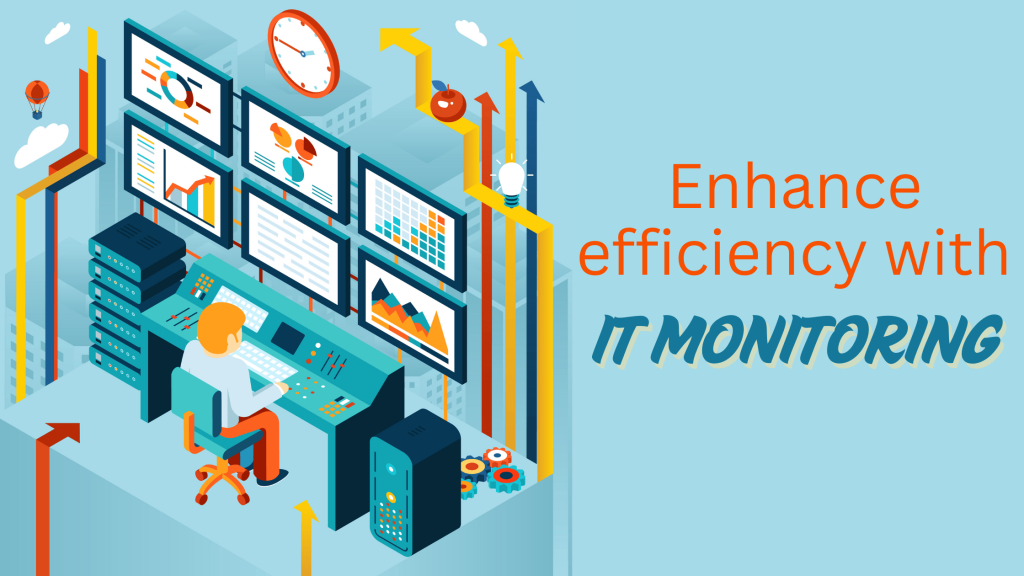Businesses across industries increasingly rely on technology to power business, deliver services, and respond to customer needs. But sophisticated IT infrastructures are daunting, especially when disaster strikes at the worst possible moment. That is where IT monitoring enters the picture—a way through which businesses can remain at top levels of performance, prevent downtime, and enhance efficiency overall. Let us explore what IT monitoring is and why it is essential for businesses today.
Currently browsing: Blog
Latest news about Xitoring
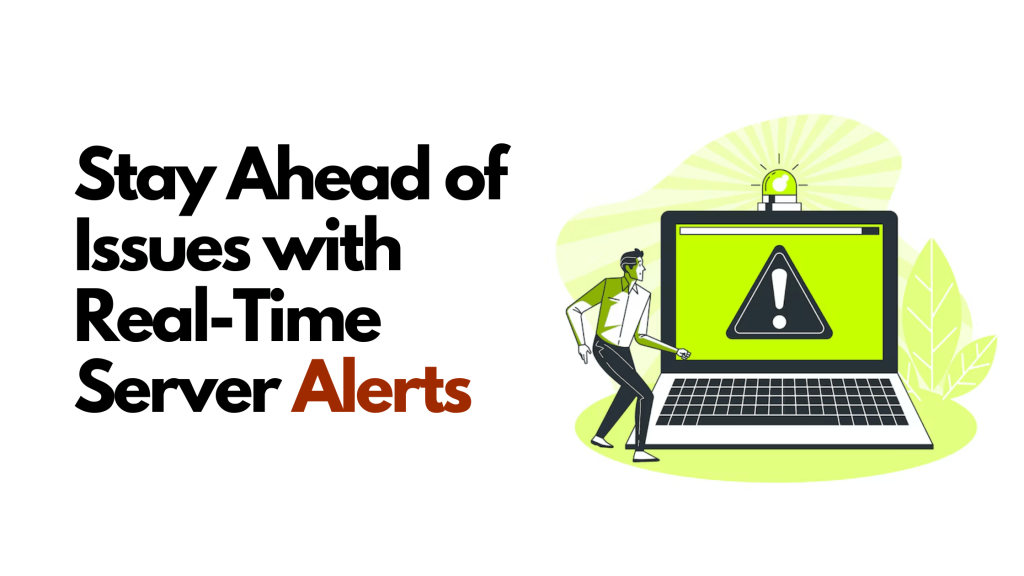
A Beginner’s Guide to Real-Time Server Alerts
Companies in most industries rely on their servers to provide smooth experiences for both customers and employees. Whether it’s processing transactions or hosting applications, server performance is vital to business success. But what if something stops the flow? A single moment of downtime can equal lost business, upset users, and even long-term reputational damage for your company.
This is where real-time server monitoring becomes useful. It is the lifeline of your IT infrastructure, providing you with ongoing monitoring and alerting you to potential issues before they spiral out of control. Think of it as having a never-sleeping guard dog for your systems—always on the watch and ready to act at a moment’s notice.
Real-time monitoring does not constitute just verifying if your servers are running or not. It delves deeper into important statistics such as CPU usage, memory, disk space, and network usage. Keeping a close eye on these, you can predict bottlenecks ahead of time and clear them in advance. Most server problems are caused by easily preventable issues such as overloading of resources or incorrect configurations, which can be easily fixed with the right monitoring software.
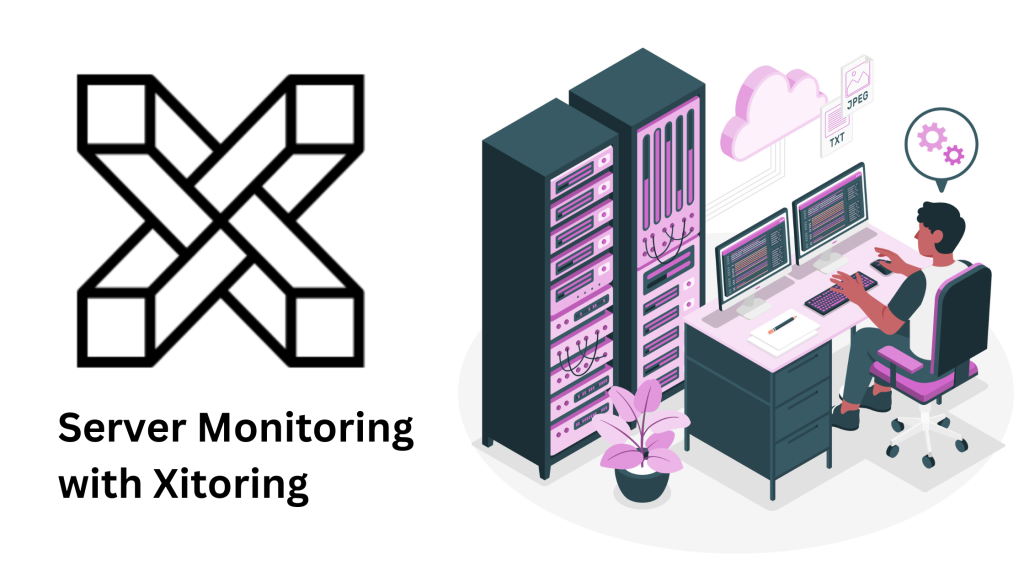
Why Choose Xitoring for Server Monitoring?
From powering websites and applications to managing critical data, servers seem to be a part of almost every aspect of modern operations. But what happens if these workhorses suddenly fall silent? Downtime can strike servers at any moment, causing frustration for customers, headaches for IT teams, and massive financial losses for businesses. From hardware failure and software bugs to something as simple as an outage, these are all common causes of downtime. Knowing and understanding them-along with learning how to handle them-will keep your company on target. In the following blog, we delve into unplanned outage causes and give you some actionable solutions that keep you steps ahead.
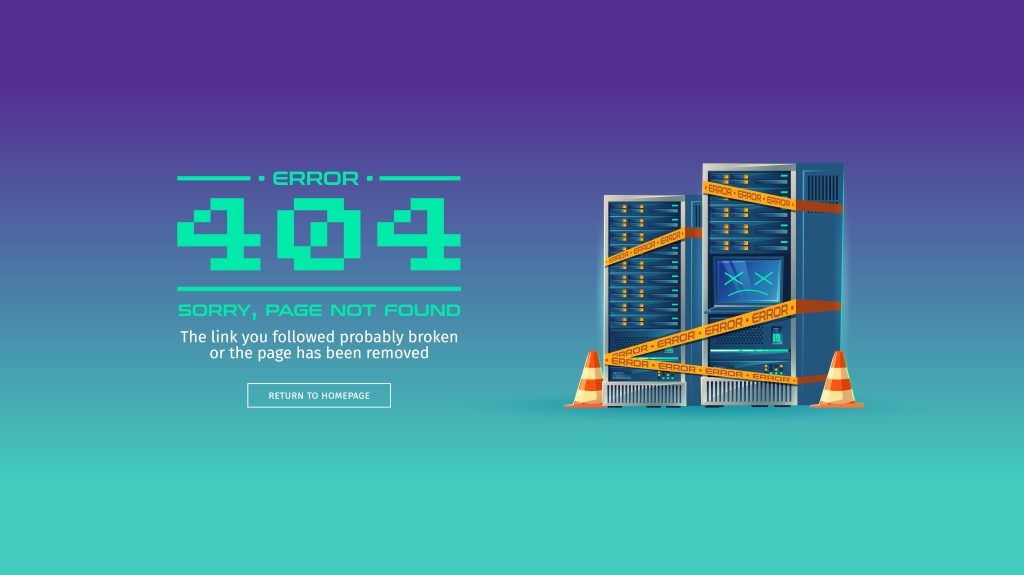
Common Causes of Server Downtime and Fixes
In today’s world, which is driven by digitalization, the unsung heroes that keep enterprises running smoothly are servers. From powering websites and applications to managing critical data, servers seem to be a part of almost every aspect of modern operations. But what happens if these workhorses suddenly fall silent? Downtime can strike servers at any moment, causing frustration for customers, headaches for IT teams, and massive financial losses for businesses. From hardware failure and software bugs to something as simple as an outage, these are all common causes of downtime. Knowing and understanding them-along with learning how to handle them-will keep your company on target. In the following blog, we delve into unplanned outage causes and give you some actionable solutions that keep you steps ahead.
Introduction to Server Downtime
In today’s digital-first world, the reliance upon servers for seamless operation is heavy. Be it powering a website or an application or critical data management; the server forms the backbone of modern IT infrastructure. But when these servers go down, results can be disastrous.
What is Server Downtime?
Downtime refers to the total time the server is unavailable or inoperable due to a problem with the hardware, malfunctioning of the software, problems related to networks, or simply human error. Though some kinds of down are scheduled-say, at routine maintenance time-the unplanned types can bring the business down completely.
For example, a few minutes of downtime on an e-commerce website may mean thousands of dollars lost in potential sales. At the same time, internal teams that depend on tools hosted on servers may suffer from serious delays and decreased productivity overall. To learn more about how to detect such issues early with monitoring, see our guide on server monitoring basics.
Why Does Server Downtime Matter for Your Business?
The impact of server downtime is more than just about inconvenience-it is multi-faceted, with the impact extending to many parts of your business:
- Financial Losses: Every second of downtime amounts to lost revenue, especially in online businesses. A detailed explanation of this subject is given in our article entitled the importance of uptime monitoring.
- Customer Inconvenience: In these days, when users are expecting instantaneous access to any service, lengthy downtime causes frustration and may force customers to look towards competitors.
- Reputation Impact: Frequent outage incidents speak volumes about the company’s credibility for reliability and trust and might dent long-term relationships with valuable clients.
- Operation Delays: The internal processes, dependent upon server functionality, come to a grinding halt to cause inefficiencies and delays in all departments.
To mitigate these risks, it’s crucial to understand the common causes of server downtime and implement effective strategies to prevent them. In the following sections, we’ll delve deeper into the root causes of downtime and provide actionable solutions to keep your servers running smoothly.
Understanding Common Causes of Server Downtime
When it comes to server downtime, no one size fits all. The reasons that can bring a server down range from one to another, and knowing them is actually the first step toward prevention. Let’s break it down into some of the most common culprits:
Hardware Failures: The Silent Killer
Then, of course, there are the really big ones. Hardware that just dies. Hard drives crash, power supplies stop working, and motherboards decide to malfunction at the worst time. Like your trusted automobile that won’t start on that one rainy day. The best way to avoid such headaches is to perform regular maintenance. It’s like the tune-up for your car before you go on that long drive.
Software Bugs and Glitches: When Code Goes Wrong
At other times, it is not an issue of hardware but software. The bug or glitch in server operating systems and applications can also bring the entire thing to a screeching halt. It usually occurs with updates or introduction of new software. How to address this? Keep yourself updated with patches and notifications. And if you feel that you might miss something important, you can always configure notifications for any kinds of anomalies.
Network Issues: When the Connection Goes Down
Even when your server itself is operating without issues, network problems can easily cause downtime. Be it a faulty router, generally slow internet, or misconfigured DNS, all these will make the server appear unreachable for users. Think about how frustrating it is when you try to troubleshoot a Wi-Fi problem in your house. For a business, though, the stakes are much greater. That is why having proper monitoring in place is so important.
Human Error: Mistakes Happen
Let’s face it—we’re all human, and humans make mistakes. From accidentally deleting critical files to misconfiguring settings, human error is one of the leading causes of server downtime. The good news? Most of these, with proper training and the right processes set up, could be avoided. Encourage your team to review their work carefully and utilize various tools that could automate repetitive tasks.
Cybersecurity Threats: When Hackers Strike
In today’s digital world, cybersecurity threats are a real concern. Malware, ransomware, and DDoS can all lead to server downtime—and sometimes even worse. Think of it as leaving your front door unlocked at night. Sure you can get away with it, and nothing will happen, but why risk it? And by strong measures of security and periodic updating of your systems, the possibility of an attack can be considerably reduced.
Power Outages: Nature Strikes Back
Power outages can be another well-known cause for server downtime. A storm taking out the power or even simple brownouts cause loss of server access, and this would hold unless there were backup systems placed. In that sense, investing in uninterruptible power supplies and generators could save you from a world of trouble.
Overloading and Resource Exhaustion: Too Much of a Good Thing
The servers go down for a very simple reason: being asked to do too much. If your server is handling more traffic or processing more data than it was designed to handle, then it may just buckle under the pressure. This is especially common during peak periods, such as holiday shopping seasons or major events. To prevent this, keep a close eye on your server’s performance and scale resources appropriately.
How to Effectively Diagnose Server Downtime
So, your server’s down, and you are staring at a blank screen or an error message. Now what? Diagnosing server downtime can be an overwhelming task, especially if you have no idea where to begin. But don’t panic-there are ways you can identify what’s causing the problem as fast and efficiently as possible.
Monitoring and Detection Tools: Your First Line of Defense
First things first, diagnosis of server downtime requires the right tools. Think of this as a doctor’s toolkit; he would not diagnose his patient without a stethoscope or thermometer, right? You want monitoring solutions that avail you with real-time insights into your server health.
If you haven’t started using a monitoring system yet, now is the best time to. These tools enable you to catch outages before they escalate by providing alerts before a full-scale outage happens. An example is the guide to monitoring your infrastructure that features some of today’s best options.
Step 1: Checking the Basics
Begin the diagnosis by checking the basic elements:
Is the server turned on? It sounds like a no-brainer, but sometimes servers get switched off by mistake-or even worse, tripped circuit breakers.
Are cables secure? It is amazing how many loose connections occur.
Is there sufficient power? Power outages or fluctuations can cause your servers to go down.
These things may sound obvious, but it’s easily overlooked in the face of site downtime.
Step 2: Network Connectivity
If all physical issues seem to be eliminated, explore network: Is the server reachable from the network from other devices? Could the server reach outwards externally to DNS servers or APIs?
If you’re unsure how to test this, many monitoring tools offer built-in diagnostics. They can ping your server, check its response time, and even run traceroutes to pinpoint bottlenecks.
Step 3: Look for Software Errors
Next, check the logs on your server for signs of software failure. Every good operating system and serious application logs information, from routine operations to critical failures. Sometimes you will find the reason for the outage by analyzing logs.
Step 4: Analyze Resource Usage
Sometimes, servers go down because they are running out of resources. High resource usage may make the performance crawl to a slow pace or sometimes totally crash. To prevent this, watch resource utilization trends. Most monitoring tools allow for threshold settings that will warn you when usage exceeds a safety limit.
Step 5: Consider Security Threats
Finally, do not forget about cybersecurity threats. Malware, ransomware, and DDoS attacks can be the reason for server downtime. If you suspect foul play, investigate security logs and scan your system for vulnerabilities. For added security, keep your security current. Regular updates, firewalls, and intrusion detection systems will go a long way in preventing an attack.
Proven Solutions to Avoid and Fix Server Downtime
Now that we have viewed the common causes of server downtime and how one can diagnose the same, let’s dive into the solutions. The good news is that most of these could be avoided, or at least fixed, given the right strategies in place. Here’s what you can do to keep your servers running just fine:
Routine Maintenance and Updates: Stay Ahead of the Game
One of the most straightforward methods to avoid downtime with your server is through proper regular maintenance of your server. Much the same way in which an oil change for your car will save you from problems bigger down the line, keeping your server updated with the latest patches and updates means you do not have problems later on in time.
Also schedule regular hardware and software checks to ensure all is well with them. Also, automation of some of the tasks will remove some workload off your team.
Implementing Systems for Redundancy: He Who Does Not Want to Give In Prepares for the Worst
Even with the best maintenance practices in place, something can still go wrong. It is here that redundancy comes into play. Like having a spare tire on your car-in case one system fails, another kicks in and keeps the operation running.
Redundancy can come in the form of everything from redundant power supplies or UPS to mirrored servers that instantly take over once the primary falls. While putting in redundancy does require an investment, it’s well worth its value in preventing downtime.
Improve Security: Don’t Let the Bad Guys Take Over
Cyber threats are at an all-time high and can affect any organization, regardless of its size. An attack can bring your server to its knees, resulting in very costly downtime and possible exposure of sensitive data.
To protect yourself, establish a strong security posture by implementing firewalls, intrusion detection systems, and regular vulnerability scans. Educate your staff about phishing scams and other social engineering methods attackers use to gain access. And don’t forget to back up your data regularly-just in case. For more information on hardening your security posture, check out these tips for staying safe.
Avoiding Human Errors: Training Your Staff Human error is one of the leading causes of server outages, yet it is equally one of the most preventable. You can go a long way in reducing the chances of such an error by training your team on the best practices and proper use of your tools.
Enable open communication and establish processes for managing the more mundane tasks. Consider using a role-based access control system, for example, which will limit the possibility of unauthorized changes being made to vital systems.
Resource Optimization: Keep the Lights On Too much traffic or computation requirements can weigh down your server and make it crash. A close watch at resource usage may be required at times, sometimes scaling the infrastructures to stop this from occurring.
CPU, memory, disk space, and network bandwidth-monitoring tools will have you finding bottlenecks well in advance of them becoming giant issues. You can set alerts when resources reach a certain threshold so that you may intervene early and often.
Disaster Recovery Planning: Be Prepared for Anything
No matter how prepared you are, there is still room for things such as natural disasters and hardware failure. That is why disaster recovery planning is paramount. One that includes the backups, failover procedures, and communication protocols that will help minimize disruption in case of an outage. Test the plan on a regular basis to ensure that it works as it should.
Best Practices in Long-Term Prevention of Downtime to Servers
Besides this, the concept of prevention need not be utilized only when troubles have occurred. It is based on building concrete grounds that support your systems even in the most extended period, keeping them workable. Given below are the best practices meant to help you stay ahead:
Proactive monitoring: Catch problems before they strike
Proactive monitoring is one of the surest ways to avoid server downtime. Consider this as having your personal assistant who watches over your server 24/7 and warns you when he feels something is about to go wrong.
In fact, monitoring tools can track everything from CPU usage and memory consumption to network traffic and application performance. By setting up alerts for unusual activity, you can often head off impending problems before they turn into full-blown outages. If you’re still unsure which tool to use, our guide to keeping an eye on your infrastructure includes some fantastic suggestions. IT Monitoring Tools You Should Know About.
Smoothing the Rough Edges: Automate Routine Tasks, Save Time, and Reduce Risks Manual processes are error-prone, especially when repetitive or complex. That is why automation is such a powerful ally in preventing server downtime.
For example, the automation of backups keeps your data safe should something go wrong. The same goes for software updates that keep your system secure and without your constant intervention.
Regular Auditing: Catch the Weak Points Early
Even the best-laid plans have no blind spot. That is why regular auditing is necessary; it gives an opportunity to step back and evaluate your entire infrastructure. Stress points, antiquated components, or inefficient procedures – any of those might be everything from finding underperforming hardware to updating outdated software.
Keeping Abreast: Stay On Top of Developments
Technology keeps changing, and what puts today may not put tomorrow. In server management, it is important to stay updated with the latest trends and changes for optimal performance.
Subscribe to industry blogs, attend webinars, and engage with online communities to learn from others’ experiences. And don’t forget to revisit your own strategies periodically to ensure they align with current best practices.
Building a Culture of Continuous Improvement
Finally, the establishment of a culture of continuous improvement within your organization will go a long way toward preventing server downtime. Let your team share ideas, try new tools, and accept changes. You are more likely to find problems early and creatively solve challenges when everyone is empowered to contribute.
Taking Control of Your Server Health
Server downtime might seem inevitable for any business, but it doesn’t have to be. By understanding the common causes and implementing effective solutions, you can take control of your server health and minimize disruptions.
Your servers are the backbone of your business. When they thrive, so does your company. By learning from industry best practices, staying informed about emerging trends, and leveraging expert solutions, you’ll create a robust foundation that keeps your business running smoothly.
Don’t wait until the next outage strikes. Act now to give your servers the care they deserve. With Xitoring, you can start protecting your infrastructure today. Click below to get started and ensure your business stays ahead of the curve.
When your servers are healthy, your business thrives. Secure your future—start here!
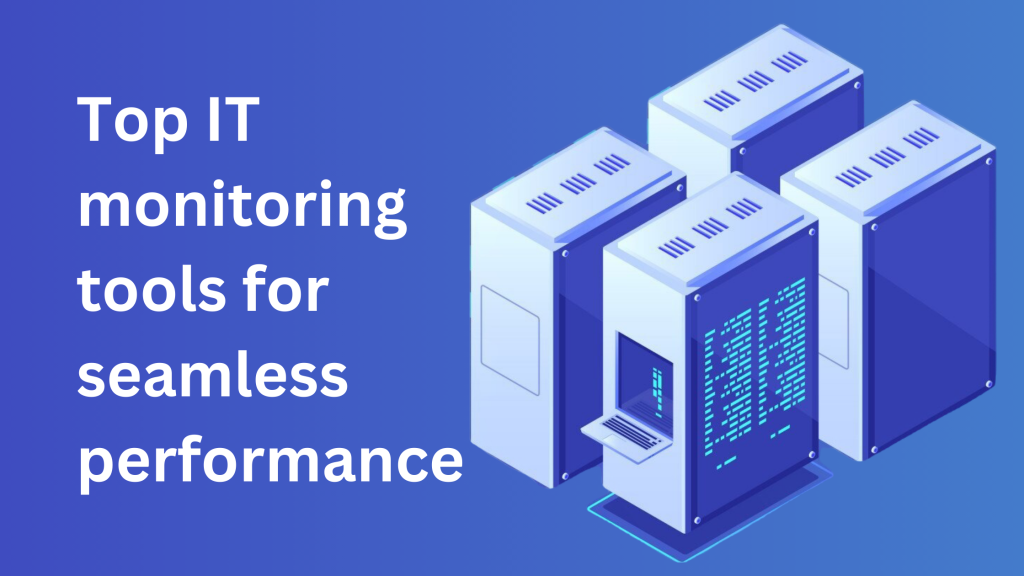
IT Monitoring Tools You Should Know About
In today’s fast-paced digital world, businesses rely heavily on IT infrastructure to deliver seamless services. To ensure consistent performance, IT monitoring tools play a critical role. They offer real-time insights, alert systems, and performance analytics to keep networks, servers, and applications running smoothly.
This article introduces some of the best IT monitoring tools, highlighting their features, benefits, and use cases to help you choose the right solution for your business needs.
What Are IT Monitoring Tools?
IT Monitoring Tools You Should Know About
IT monitoring tools are software platforms that track and analyze the performance, availability, and health of IT systems such as servers, applications, networks, and databases. They provide real-time data, detect potential issues, and send alerts to ensure optimal performance. These tools are indispensable for businesses aiming to reduce downtime and enhance user experience.
1. Xitoring

Features:
- Real-time server and uptime monitoring.
- Customizable alerts for performance issues.
- Intuitive dashboards for detailed metrics.
Why Choose Xitoring?
Xitoring is perfect for businesses of all sizes seeking a scalable and reliable IT monitoring solution. Its seamless integration, robust alert system, and user-friendly interface make it a top choice for managing IT infrastructure.
Website: https://xitoring.com/
2. UptimeRobot

Features:
- Simple and affordable uptime monitoring.
- Supports multiple protocols (HTTP, Ping, DNS).
- Easy-to-use interface and customizable status pages.
Why Choose UptimeRobot?
UptimeRobot is ideal for small to medium-sized businesses that need budget-friendly yet efficient uptime monitoring. Its free plan offers essential features, while paid plans provide more advanced capabilities.
Website: http://uptimerobot.com/
3. Pingdom

Features:
- Comprehensive website and server monitoring.
- Real-time alerts and performance insights.
- Synthetic transaction monitoring and page speed analysis.
Why Choose Pingdom?
Pingdom is an excellent tool for businesses that prioritize user experience. Its ability to simulate user interactions and provide actionable insights helps organizations optimize website and application performance.
Website: http://pingdom.com/
4. Better Stack

Features:
- Full-stack monitoring for applications and infrastructure.
- Integrated logging and alerting capabilities.
- Advanced analytics for trend identification and root cause analysis.
Why Choose Better Stack?
Better Stack offers a unified view of IT performance by combining monitoring, alerting, and log management. It’s a great choice for developers and IT teams seeking a holistic monitoring solution.
Website: http://betterstack.com/
5. Uptime.com

Features:
- Website and server monitoring with detailed analytics.
- Support for multiple monitoring locations worldwide.
- SLA monitoring and comprehensive reporting.
Why Choose Uptime.com?
Uptime.com is designed for enterprises requiring robust and scalable monitoring solutions. It provides in-depth insights and ensures compliance with service-level agreements (SLAs).
Website: http://uptime.com/
How to Choose the Right IT Monitoring Tool
When selecting an IT monitoring tool, consider the following factors:
- Ease of Integration: Ensure the tool integrates smoothly with your existing IT infrastructure.
- Customizability: Look for tools with flexible alert systems and customizable metrics.
- Scalability: Choose a solution that can grow alongside your business.
- Cost: Evaluate whether the pricing aligns with your budget and required features.
- Customer Support: Opt for tools with reliable support and resources for troubleshooting.
Benefits of Using IT Monitoring Tools
- Proactive Issue Detection: Real-time alerts enable teams to resolve issues before they escalate.
- Improved Performance: By monitoring metrics like response time and uptime percentage, businesses can optimize their systems for peak performance.
- Reduced Downtime: Swift issue resolution minimizes disruptions and ensures high availability.
- Enhanced User Experience: Consistent performance leads to better customer satisfaction and loyalty.
- Data-Driven Decisions: Detailed reports and analytics provide insights for informed IT strategies.
Conclusion
IT monitoring tools are essential for maintaining the performance and reliability of modern IT infrastructure. Whether you’re a small business or a large enterprise, there’s a monitoring tool tailored to your needs. From the budget-friendly features of UptimeRobot to the comprehensive capabilities of Xitoring and Uptime.com, these tools empower businesses to reduce downtime, enhance performance, and optimize IT operations.
Start optimizing your IT infrastructure today. Explore Xitoring and other top tools to ensure your systems run smoothly and efficiently.
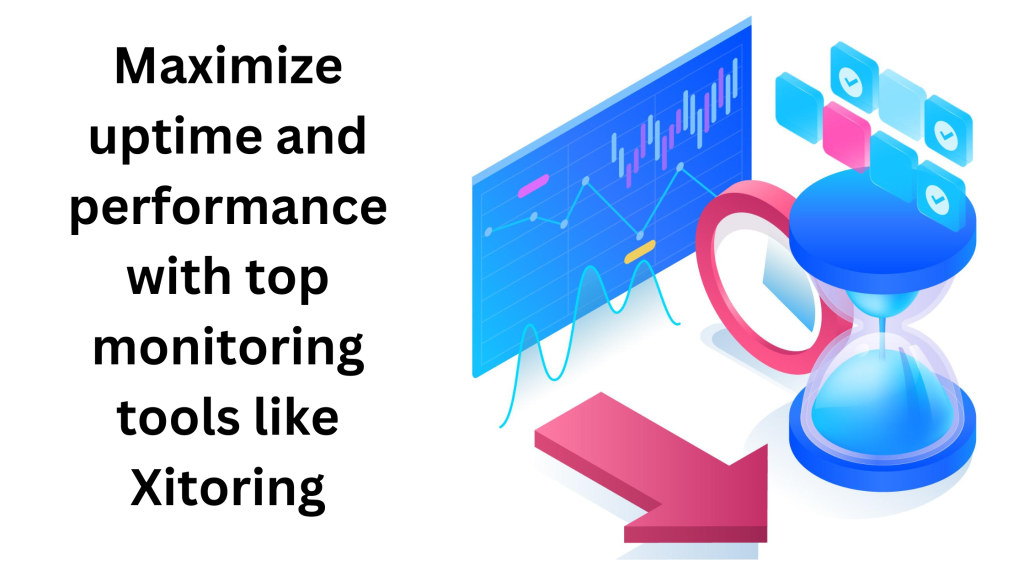
5 Reasons Uptime Monitoring Is Essential
In today’s digital-first economy, uptime monitoring has become a cornerstone of effective IT management. Whether you’re running an e-commerce platform, SaaS business, or a simple company website, ensuring uninterrupted availability is crucial for success. Downtime not only impacts revenue but also tarnishes brand reputation. With tools to detect and resolve issues proactively, uptime monitoring can significantly improve operational resilience.
In this comprehensive guide, we’ll explore why uptime monitoring matters, breaking it down into five core benefits that contribute to long-term business growth and customer satisfaction.
What Is Uptime Monitoring?
Uptime monitoring refers to the continuous tracking of the availability and performance of websites, servers, and applications. By leveraging monitoring tools, businesses can receive real-time alerts about outages or performance issues, ensuring swift resolution. This proactive approach minimizes disruptions, improves the user experience, and enhances overall system reliability.
How Does It Work?
Uptime monitoring systems utilize automated tools to:
- Ping servers at regular intervals.
- Measure response times.
- Identify performance bottlenecks.
- Send immediate alerts when issues arise.
By combining these functions, businesses can achieve greater transparency and control over their IT infrastructure.
Minimize Downtime:
Every second of downtime counts. In e-commerce, even a brief outage can lead to lost sales and dissatisfied customers. Downtime also disrupts business operations, causing delays and increasing operational costs.
How Uptime Monitoring Minimizes Downtime
Uptime monitoring tools provide real-time notifications, enabling IT teams to act quickly. Automated systems can detect and log the root causes of downtime, streamlining the troubleshooting process. By resolving issues swiftly, businesses can reduce the impact of outages and ensure a seamless user experience.
Improve Customer Trust
Why Trust Matters in the Digital Age
In a competitive landscape, customer trust is a key differentiator. Frequent downtime erodes confidence, making users hesitant to return or recommend your service.
Building Trust with Uptime Monitoring
By maintaining high availability, businesses demonstrate reliability and professionalism. Customers are more likely to trust brands that prioritize their online experience. Proactive uptime monitoring showcases a commitment to service excellence, strengthening customer loyalty.
Optimize Performance
Performance as a Key Competitive Advantage
While uptime ensures availability, performance determines the quality of the user experience. Slow-loading websites or applications frustrate users and lead to higher bounce rates. Studies show that a one-second delay in page load time can reduce conversions by up to 7%.
Uptime Monitoring as a Performance Optimizer
Many uptime monitoring tools go beyond basic availability checks, providing insights into performance metrics like:
- Response times: Track how quickly your servers respond to user requests.
- Latency: Measure delays in data transmission.
- Load times: Identify bottlenecks affecting page speed.
By analyzing these metrics, businesses can fine-tune their systems, improve loading speeds, and deliver a smoother user experience. Tools such as Pingdom or Datadog offer detailed performance reports, empowering IT teams to make data-driven improvements.
Detect Issues Early
The Cost of Unresolved Issues
Minor system hiccups, if left unchecked, can escalate into significant problems, leading to prolonged outages or degraded performance. Early detection is crucial to mitigating risks and avoiding costly repairs or lost business opportunities.
Proactive Monitoring for Early Issue Detection
Uptime monitoring tools are designed to detect anomalies, such as:
- Spikes in server usage
- Unusual traffic patterns
- Potential hardware failures
By receiving real-time alerts, IT teams can take preventative measures, such as increasing server capacity during traffic surges or replacing failing components before they cause downtime. This proactive approach not only minimizes disruptions but also extends the lifespan of your IT infrastructure.
Stay Competitive
Reliability as a Market Differentiator
In today’s fast-paced digital marketplace, customers gravitate toward businesses they can rely on. High uptime and consistent performance set your brand apart from competitors, particularly in industries where availability is mission-critical, such as SaaS, e-commerce, and financial services.
Competitive Edge Through Monitoring Tools
With uptime monitoring, you can:
- Maintain a robust online presence.
- Provide a superior user experience.
- Gain an advantage over less reliable competitors.
For instance, businesses using advanced tools like UptimeRobot or Xitoring can achieve near-perfect uptime, ensuring their services remain accessible 24/7.
Best Tools for Uptime Monitoring
Key Features to Look For
When selecting an uptime monitoring tool, consider these critical features:
- Real-time alerts: Immediate notifications when issues arise.
- Customizable reports: Detailed performance metrics tailored to your needs.
- Integration options: Compatibility with existing systems.
- Ease of use: User-friendly dashboards and controls.
Recommended Tools
Here are some top-rated uptime monitoring tools to explore:
1. Xitoring

- Key Features:
- Real-time uptime monitoring for servers and websites.
- Supports multiple protocols: Ping, HTTP(s), DNS, and more.
- Customizable notification channels and public status pages.
- Advanced performance metrics and detailed reporting.
- Best For: Businesses looking for centralized, versatile server monitoring with customizable alerts.
- Website URL: https://xitoring.com/
2. UptimeRobot

- Key Features:
- Free monitoring for websites, SSL, ports, and keywords.
- Customizable status pages and incident updates.
- Maintenance windows for scheduled downtime.
- 1-minute monitoring intervals for paid plans.
- Best For: Small to medium-sized businesses seeking budget-friendly uptime monitoring with essential features.
- Website URL: http://uptimerobot.com/
3. Pingdom

- Key Features:
- Synthetic monitoring to simulate user interactions.
- Comprehensive uptime and performance monitoring.
- Page speed analysis and transaction monitoring.
- Advanced alerting and detailed performance reports.
- Best For: Enterprises and e-commerce businesses focused on user experience and performance optimization.
- Website URL: http://pingdom.com/
4. Better Stack

- Key Features:
- Website and API monitoring with incident management.
- Playwright-based transaction monitoring for complex workflows.
- Customizable status pages and real-time notifications.
- Integrates with Slack, Teams, and other incident management tools.
- Best For: Teams requiring a robust observability stack with advanced transaction checks and log management.
- Website URL: http://betterstack.com/
5. Uptime.com

-
- Key Features:
- Uptime, API, synthetic, and real user monitoring.
- Private location monitoring for internal systems.
- Comprehensive reporting and analytics.
- Customizable status pages and multi-channel alerts.
- Best For: Large-scale enterprises seeking diverse monitoring solutions with detailed reporting.
- Website URL: http://uptime.com/
- Key Features:
Conclusion
Each tool offers unique advantages, so choose one that aligns with your business goals and technical requirements.
In today’s always-on digital landscape, uptime monitoring is more than a technical necessity—it’s a strategic imperative. By minimizing downtime, optimizing performance, detecting issues early, and staying competitive, businesses can safeguard their reputation, retain customer trust, and drive growth. With tools like Xitoring, you can take your uptime monitoring to the next level. Try Xitoring for free today and ensure your digital operations stay seamless and reliable.
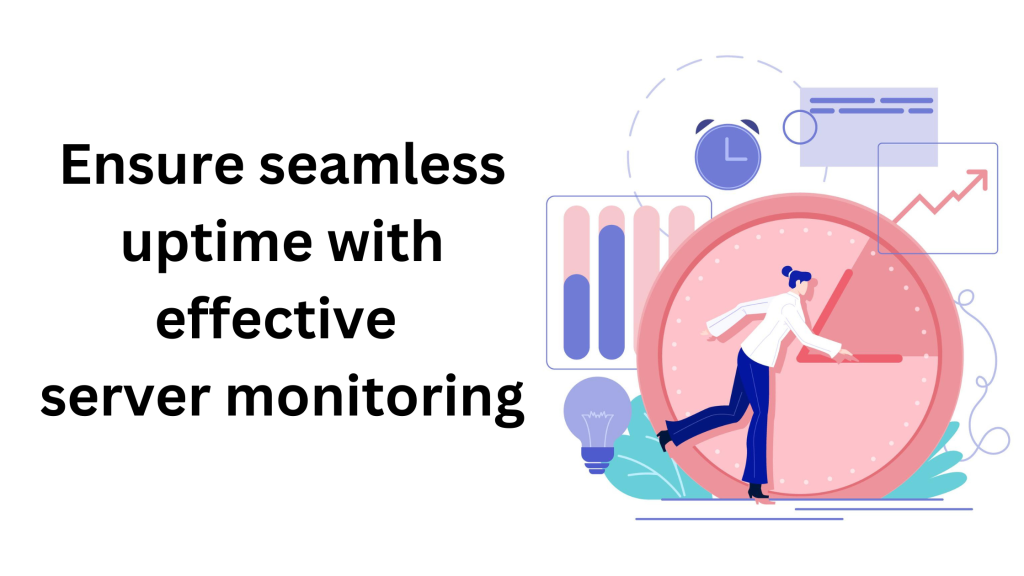
How to Monitor Server Uptime Effectively
Ensuring high server uptime is crucial for maintaining seamless digital operations. Whether you’re managing a website, application, or infrastructure, learning how to monitor server uptime effectively can help you detect issues early and minimize downtime. In this tutorial, we’ll explore the key steps, tools, and best practices to monitor server uptime.
Why Uptime Monitoring Matters
In today’s digital age, server uptime is critical to business success. Prolonged downtime not only affects revenue but also damages customer trust and brand reputation. Learning how to monitor server uptime effectively helps ensure that your website, applications, and infrastructure remain available around the clock.
This guide will walk you through the essential steps, best tools, and key practices for effective uptime monitoring.
What Does Monitoring Server Uptime Mean?
Server uptime monitoring involves tracking the availability and performance of servers to ensure uninterrupted service. By using specialized tools, IT teams can detect potential issues early and resolve them before they impact end users.
Step 1: Choose the Right Uptime Monitoring Tool
Choose the Right Uptime Monitoring Tool
Selecting the right tool is foundational to effective uptime monitoring. Here are some popular options:
- Xitoring: Provides real-time monitoring, customizable alerts, and detailed performance metrics.
- Pingdom: A user-friendly tool with advanced synthetic monitoring capabilities.
- UptimeRobot: Affordable and reliable with free uptime checks every five minutes.
- Better Stack: Combines uptime monitoring with incident management and log analysis.
- Uptime.com: Offers comprehensive monitoring solutions, including API and real user monitoring.
When choosing a tool, consider factors like reporting capabilities, ease of integration, and alert customization.
Step 2: Set Up Real-Time Alerts
Set Up Real-Time Alerts
Timely notifications are essential for mitigating downtime. Real-time alerts allow IT teams to respond immediately to potential issues. Most monitoring tools support multiple channels for alerts, such as:
- SMS
- Slack or Microsoft Teams integrations
Customizable thresholds for triggers (e.g., high latency, error rates) ensure that alerts are both actionable and relevant.
Step 3: Monitor Key Metrics
Monitor Key Metrics
For effective server uptime monitoring, focus on these core metrics:
- Uptime Percentage: Measures server availability over a specified period. Aim for 99.99% or higher.
- Response Time: Indicates how quickly your server responds to requests, affecting user experience.
- Error Rate: Tracks the frequency of HTTP errors, which can signal performance issues.
- Latency: Measures delays in server response time, particularly crucial for real-time applications.
These metrics provide insights into your server’s health and performance, enabling proactive problem-solving.
Step 4: Analyze Reports and Logs
Analyze Reports and Logs
Detailed reports and error logs are invaluable for identifying recurring issues. Tools like Xitoring and Better Stack offer performance dashboards that highlight trends, making it easier to spot vulnerabilities.
Analyze these reports regularly to:
- Identify performance bottlenecks.
- Plan infrastructure upgrades.
- Ensure compliance with service-level agreements (SLAs).
Step 5: Conduct Regular Maintenance
Conduct Regular Maintenance
Preventive maintenance minimizes the risk of unplanned outages. Use your monitoring tool’s data to schedule tasks like:
- Server software updates
- Hardware inspections
- Database optimization
- Backup and disaster recovery tests
Regular maintenance helps maintain system health and extends the lifespan of your infrastructure.
Best Practices for Uptime Monitoring
Best Practices for Uptime Monitoring
- Define Clear Objectives: Set uptime targets, such as achieving 99.99% availability.
- Automate Monitoring: Use automation to streamline tasks like uptime checks and reporting.
- Test Failover Systems: Ensure backup systems are operational and ready to take over during outages.
- Ensure Scalability: Select tools and infrastructure that can grow with your business.
Conclusion
Effectively monitoring server uptime is vital for maintaining a seamless digital presence. By leveraging the right tools, configuring real-time alerts, and adhering to best practices, businesses can minimize downtime, optimize performance, and enhance user satisfaction.

What Is Server Monitoring? A Complete Guide
Server monitoring is the continuous process of tracking the performance, health, and availability of your servers. Using specialized tools and software, server monitoring helps you:
- Keep track of server uptime and downtime.
- Analyze CPU, memory, and disk usage.
- Identify potential security vulnerabilities.
- Receive real-time alerts for performance issues.
By staying on top of these metrics, IT teams can proactively address problems before they escalate, ensuring a seamless user experience and minimizing costly disruptions.
Why Is Server Monitoring Important?
The importance of server monitoring cannot be overstated. Here’s why it matters:
Minimizes Downtime
Downtime can cost businesses thousands of dollars per minute. Server monitoring tools send real-time alerts that help IT teams quickly resolve issues, ensuring maximum uptime and minimal disruptions.
Improves Performance
Continuous monitoring helps businesses identify performance bottlenecks. For instance, excessive CPU or memory usage can be resolved before it affects server performance.
Enhances Security
Server monitoring detects unusual activity, such as unauthorized access attempts or malware, enabling quick action to mitigate threats and protect sensitive data.
Optimizes Resource Allocation
Monitoring tools provide insights into resource usage, helping organizations allocate resources efficiently and avoid unnecessary costs.
How Does Server Monitoring Work?
Server monitoring tools, such as Xitoring, operate by collecting and analyzing data from your server’s hardware and software. Here’s how they work:
- Data Collection: Agents or scripts installed on the server gather key metrics like CPU usage, disk space, and network traffic.
- Data Analysis: The collected data is analyzed to identify patterns or anomalies that indicate potential issues
- Alerts and Reporting: When issues are detected, real-time alerts are sent via email, SMS, or integrations like Slack. Detailed reports help IT teams review performance trends and make informed decisions.
Key Metrics in Server Monitoring
To effectively monitor servers, it’s essential to track the following metrics:
- Uptime: Measure the percentage of time the server is operational.
- CPU Usage: Monitor how much processing power is being used.
- Memory Usage: Ensure the server’s memory is not overburdened.
- Disk Space: Track available storage to prevent crashes due to insufficient space.
- Network Traffic: Analyze bandwidth usage and detect unusual traffic spikes.
- Error Logs: Review logs for recurring errors that could signal deeper issues.
Tools for Server Monitoring
A variety of server monitoring tools are available, each offering unique features. Here are a few popular options:
- Xitoring: Renowned for real-time monitoring capabilities and uptime alerts.
- Nagios: A versatile tool with robust monitoring for servers and networks.
- SolarWinds Server & Application Monitor: Offers deep insights into server performance and dependencies.
- Datadog: Provides comprehensive cloud-based monitoring solutions.
When choosing a tool, consider factors like ease of use, integration capabilities, scalability, and cost.
Best Practices for Effective Server Monitoring
To maximize the benefits of server monitoring, follow these best practices:
- Define Clear Objectives: Identify which metrics are most critical to your business.
- Set Real-Time Alerts: Configure alerts for key metrics to address issues promptly.
- Automate Where Possible: Use tools that offer automated responses to specific issues.
- Regularly Review Reports: Analyze performance trends to identify and resolve potential problems.
- Prioritize Security: Ensure monitoring tools are set up to detect potential security breaches.
How Xitoring Can Help
Xitoring simplifies server monitoring with its intuitive interface and robust features. Whether you need to track uptime, analyze performance metrics, or set up real-time alerts, Xitoring delivers reliable insights to keep your servers running smoothly. Designed for businesses of all sizes, Xitoring’s flexible tools can be tailored to your specific needs.
Conclusion
Server monitoring is essential for maintaining optimal server performance, reducing downtime, and enhancing security. By leveraging the right tools and following best practices, businesses can proactively address issues and deliver seamless experiences to their users.
Ready to elevate your server monitoring game? Explore Xitoring’s solutions today and take the first step toward uninterrupted server performance!
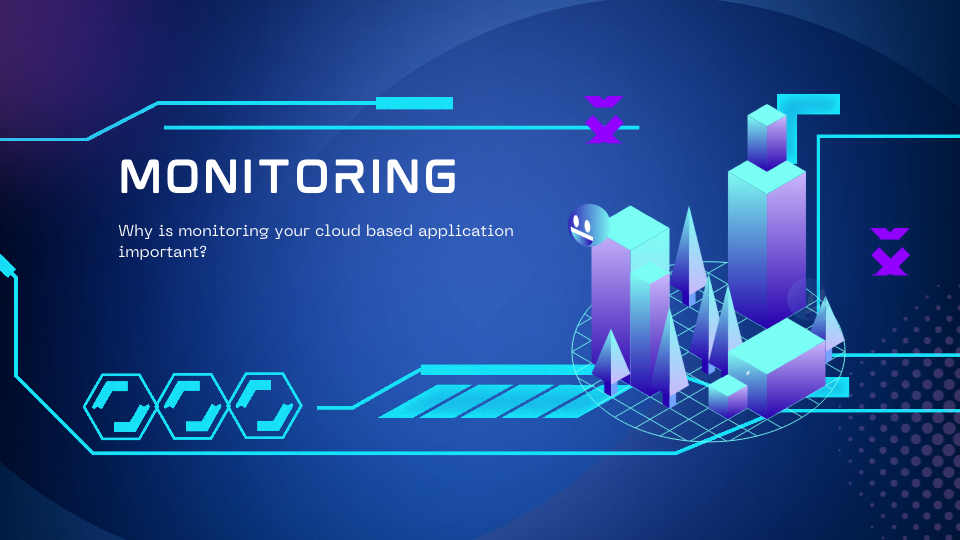
What is cloud server monitoring?
What is Cloud Server Monitoring?
Cloud server monitoring is the process of tracking and managing the performance, health, and availability of cloud-hosted servers. This involves observing various metrics such as CPU usage, memory consumption, disk I/O, network activity, and more. It also includes monitoring the applications running on these servers, as well as the overall user experience.
Monitoring can be carried out using a variety of tools and techniques, often provided by cloud service providers or through third-party solutions. The primary objective is to ensure that the infrastructure and applications run smoothly, efficiently, and securely. Effective monitoring helps in identifying potential issues before they escalate, thereby minimizing downtime and ensuring a seamless experience for end-users.

What is Disk Health Check Monitoring?
A hard drive health check is a process of examining the overall condition and performance of a hard drive to ensure it’s functioning properly. SMART (Self-Monitoring, Analysis, and Reporting Technology) check is a technology built into most modern hard drives that monitors various attributes of the drive’s performance and predicts its reliability. It can alert users to potential issues before they become serious problems, allowing for proactive maintenance or replacement.
Why Monitoring Hard Drive Health Matters
Using hard drive health checks, such as SMART, is one of the smartest thing, an administrator can do on the server infrastructure. Using hard drive health checks is essential for maintaining the reliability, security, and performance of your storage systems. Whether you’re a home user, a small business, or a large enterprise, implementing regular monitoring and maintenance practices can help safeguard your data and ensure the longevity of your hardware.
